4 Electrode Conductivity Sensor
-
Price
Price on request ≥1piece
-
Model Number
C4E -
Data Sheet
-
Package
Original packaging -
Specs
C4E -
Quantity
- +Send Inquiry
Find Similar Products
-
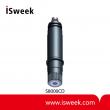
Modular Flat Surface pH & ORP Electrodes
Model Number:S8000CD/S8075CD Series
MOQ:1
-
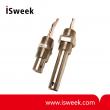
Industrial Contacting Conductivity Sensors
Model Number:CS650/CS675/CS676 Series
MOQ:1
-
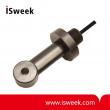
Toroidal Conductivity Sensor
Model Number:TCS3000 / TCS3020
MOQ:1
-
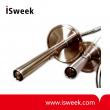
Sanitary Flange Mounted Conductivity/Resistivity Sensor
Model Number:CS615/CS620 Series
MOQ:1
-
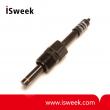
Low Cost Epoxy Body Conductivity Sensors
Model Number:CS150/CS200 Series
MOQ:1
-
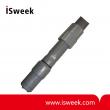
Submersible Flat-Surface, Self-Cleaning pH and ORP Electrodes
Model Number:S650/S651 Series
MOQ:1
Product Description
C4E Conductivity Sensor electrode technology:
The sensor works with 4 electrodes: An alternating current of constant voltage is established between a primary pair of electrodes in graphite. The secondary electrodes in platinum regulate the voltage imposed to the primary electrodes to reflect the fouling. The voltage measured between the primary electrodes is the function of the resistance and therefore a measurement of the conductivity.
C4E Conductivity Sensor Digital Technology :
The smart digital C4E sensor stores calibration history data within the sensor. This allows a 'plug and play' system without re-calibration.
C4E Conductivity Sensor Digitally optimised measurement technology
• 4 electrode conductivity sensor (2 graphite & 2 platinum)
• Smart sensor stores configuration settings and calibration history
• Range 0-200 mS/cm
• Digital sensor - Modbus RS-485
• Robust and watertight
C4E Conductivity Sensor Applications
• Industrial effluent treatment
• Urban wastewater treatment
• Surface water monitoring
• Sea water
• Drinking water
C4E Conductivity Sensor Specification
The sensor works with 4 electrodes: An alternating current of constant voltage is established between a primary pair of electrodes in graphite. The secondary electrodes in platinum regulate the voltage imposed to the primary electrodes to reflect the fouling. The voltage measured between the primary electrodes is the function of the resistance and therefore a measurement of the conductivity.
C4E Conductivity Sensor Digital Technology :
The smart digital C4E sensor stores calibration history data within the sensor. This allows a 'plug and play' system without re-calibration.
C4E Conductivity Sensor Digitally optimised measurement technology
• 4 electrode conductivity sensor (2 graphite & 2 platinum)
• Smart sensor stores configuration settings and calibration history
• Range 0-200 mS/cm
• Digital sensor - Modbus RS-485
• Robust and watertight
C4E Conductivity Sensor Applications
• Industrial effluent treatment
• Urban wastewater treatment
• Surface water monitoring
• Sea water
• Drinking water
C4E Conductivity Sensor Specification
|
Measurement |
|
|
Measurement principle |
Conductivity sensor with 4 electrodes (2 graphite, 2 platinum) |
|
Measured conductivity ranges |
0-200.0 μS/cm |
|
Resolution |
0.01 to 1 according the range |
|
Accuracy |
+/- 1 % of the full range |
|
Measured salinity range |
5-60 g/Kg |
|
Measured TDS -KCl range |
0-133 000 ppm |
|
Response time |
< 5 s |
|
Working temperature |
0°C to 50°C |
|
Temperature compensation |
CTN |
|
Operating temperature |
-10°C to +60°C |
|
Signal interface |
Modbus RS-485 ( option SDI-12) |
|
Maximum refreshing time |
Max < 1 s |
|
Sensor power-supply |
5 to 12 volts |
|
Electric consumption |
Standby: 25 μA |
|
Sensor |
|
|
Dimensions |
Diameter: 27 mm; Length: 177 mm |
|
Weight |
350g (sensor + 3 metres cable) |
|
Material |
PVC, stainless steel |
|
Maximum pressure |
5 bars |
|
Connection |
9 armoured connectors, polyurethane jacket, bare-wires or waterproof |
|
Degree of protection |
IB68 up to gland |
|
Protection |
IP68 |




